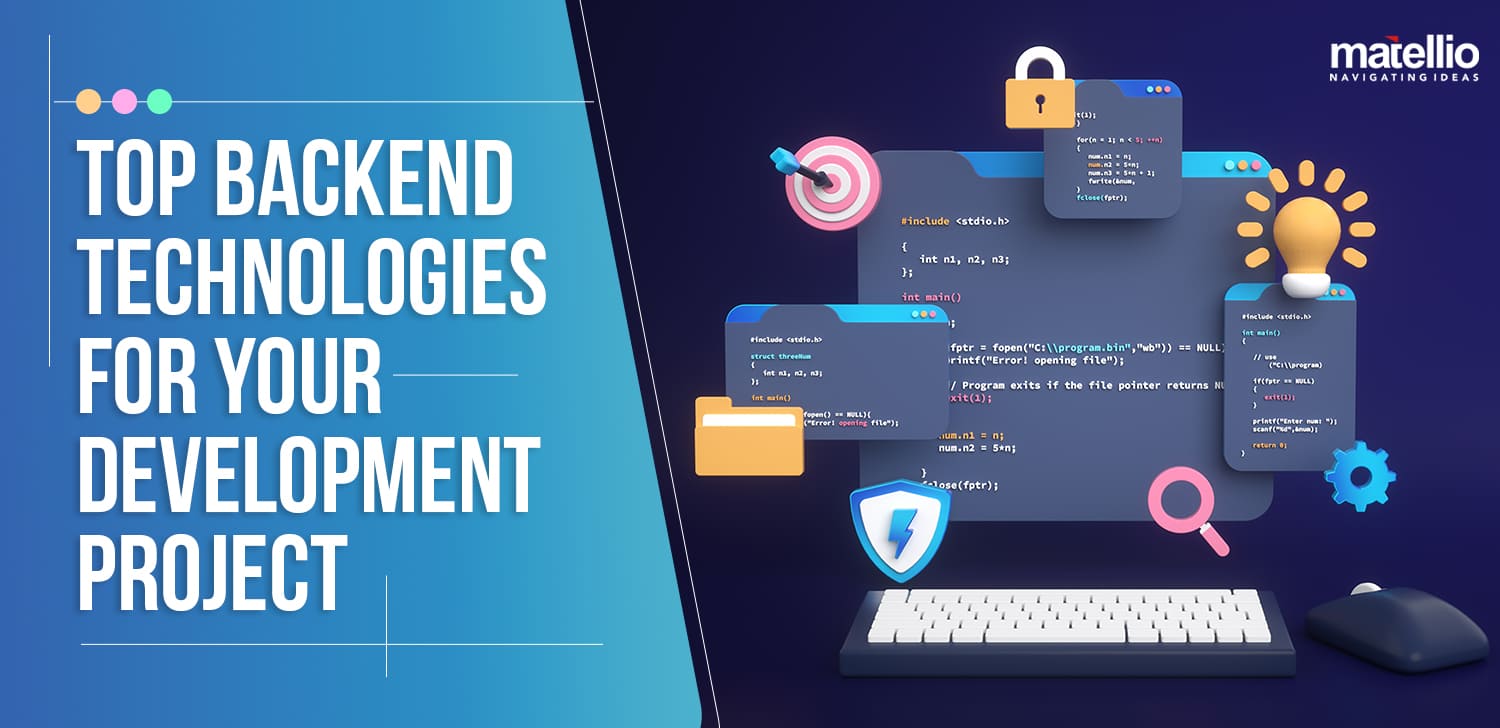When you’re building a project, you need to choose the right tools to make everything work behind the scenes. These tools are called backend technologies. They help your project run smoothly and do all the heavy lifting. Let’s look at the top backend technologies for your project in 2023 and see their pros and cons. We’ll explain each one simply so everyone can understand!
1. Node.js
What is Node.js?
Node.js is a technology that lets you run JavaScript code on the server side of your project. It’s like using JavaScript, which is usually used in web browsers, to control what happens on the server.
Pros of Node.js
- Speed: Node.js is very fast. It can handle many requests at once without slowing down, which is great for busy websites or apps.
- JavaScript Everywhere: If you already know JavaScript, you can use the same language for both your website’s frontend and backend. This makes coding easier.
- Large Community: There are lots of people who use Node.js and share their code. This means you can find lots of helpful tools and advice.
Cons of Node.js
- Not Great for CPU-Intensive Tasks: Node.js can slow down if it has to do a lot of complex calculations because it’s single-threaded.
- Callback Hell: Sometimes, the code can get messy with many nested functions, which is called “callback hell.” This can make it hard to read and manage.
2. Python (Django and Flask)
What is Python?
Python is a popular programming language that is known for being easy to read and write. Django and Flask are two frameworks for Python that help you build websites and apps.
Pros of Python
- Easy to Learn: Python is very beginner-friendly. Its code is clean and easy to understand, making it a great choice for new programmers.
- Powerful Frameworks: Django and Flask are powerful tools that help you build your project faster. Django is like a ready-made toolkit with lots of features, while Flask is more flexible and lightweight.
- Good for Data: Python is excellent for handling data and performing complex tasks like data analysis or machine learning.
Cons of Python
- Slower Speed: Python can be slower than some other languages because it’s an interpreted language. This might be a problem if you need very high performance.
- Less Concurrency: Python’s Global Interpreter Lock (GIL) can make it harder to handle multiple tasks at once.
3. Ruby on Rails
What is Ruby on Rails?
Ruby on Rails, or Rails for short, is a framework for the Ruby programming language. It helps you build web applications quickly and efficiently.
Pros of Ruby on Rails
- Speed of Development: Rails is designed to make development faster. It has many built-in features and conventions that save you time.
- Elegant Code: Ruby and Rails encourage writing clean and elegant code. This can make your project easier to maintain.
- Built-In Tools: Rails comes with lots of tools that help you with common tasks like handling user accounts and managing data.
Cons of Ruby on Rails
- Performance: Rails can be slower than some other technologies, especially for very large projects or high-traffic websites.
- Learning Curve: While Rails can speed up development, it has its own way of doing things, which might be tricky for beginners.
4. Java Spring Boot
What is Java Spring Boot?
Spring Boot is a framework for Java that makes it easier to build stand-alone, production-ready applications. Java is a well-known programming language used for many big projects.
Pros of Java Spring Boot
- Strong Performance: Java and Spring Boot can handle a lot of traffic and complex tasks efficiently, which is great for big applications.
- Comprehensive Documentation: There’s plenty of documentation and support available for Java and Spring Boot, which helps when you run into problems.
- Enterprise Ready: Java is widely used in large businesses and enterprises. Spring Boot helps you build reliable and scalable applications.
Cons of Java Spring Boot
- Complexity: Spring Boot can be complex and has a steep learning curve. It might take time to get used to all its features.
- Verbose Code: Java code can be more verbose compared to languages like Python or JavaScript, meaning you might write more code to do the same thing.
5. PHP
What is PHP?
PHP is a server-side scripting language that is often used to create dynamic web pages. It has been around for a long time and is still widely used.
Pros of PHP
- Easy to Deploy: PHP is supported by most web hosting services, making it easy to set up and use.
- Large Community: There are many PHP developers and lots of resources available, which makes it easier to find help and solutions.
- Good for Web Pages: PHP is very good at handling web pages and integrating with databases like MySQL.
Cons of PHP
- Inconsistent Design: PHP has evolved over the years, and some parts of it can be inconsistent or outdated.
- Security Issues: PHP can be prone to security issues if not used properly, so you need to be careful with coding practices.
By understanding the pros and cons of these top backend technologies, you can make a better choice for your project. Each technology has its strengths and weaknesses, so think about what fits best with your needs and goals.



